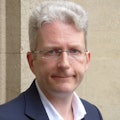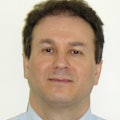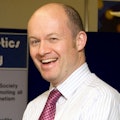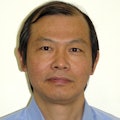Future materials

The Future Materials multidisciplinary group is coordinating research across engineering to support the development of the new materials required to underpin future technology developments.
Our aims
Combining expertise from across the School of Engineering and through multi-disciplinary collaborations, we seek to design and simulate the manufacturing and characterisation of new materials. Our expertise allows us to focus on a wide range of applications from medical devices, advanced ceramics, magnetic materials and energy materials to sustainable construction materials.
Our research projects
Resilient materials for life
This Engineering and Physical Sciences Research Council (EPSRC) Programme Grant is led by Professor Tony Jefferson. It is in collaboration with the Cardiff University School of Chemistry, University of Bath, University of Cambridge and University of Bradford. By 2022 we will aim to have achieved a transformation in construction materials, using the biomimetic approach first adopted in Materials for Life (M4L), to create materials that will adapt to their environment, develop immunity to harmful actions, self-diagnose the on-set of deterioration and self-heal when damaged.
Find out more at www.RM4L.com,
Additive manufacturing using metal pilot line (MANUELA)
MANUELA aims to realise a metal Additive Manufacturing (AM) pilot line service covering the full additive manufacturing (AM) development cycle including simulation, robust AM manufacturing, online process control, characterisation, real-time feedback, post-treatment, AM qualification protocols and associated business model. Our contribution is the development of machine learning/datamining techniques to optimise the AM manufacturing and simulation process, using processing and material data (eg in process optimisation, digital twin development). This work is led by Dr Samuel Bigot.
Find out more at www.manuela-project.eu.
Artificial cells with distributed cores to decipher protein function (ACDC)
In collaboration with the Universities of Trento and Zurich, Professor David Barrow is leading this European Union funded project, which will employ a living technology platform of artificial cell technologies towards the next generation of small molecule drug discovery, protein biophysics, and biochemical energy production. The project aims to emulate the structure and dynamics of living cells and cellular tissues by embedding biochemical and biophysical systems capable of sensing, reconfiguration, synthesis, electrochemical gradient production and biochemical energy production.
Stability of organic solar cells based on non-fullerene acceptors
Led by Dr Zhe Li and in collaboration with Swansea University, Imperial College, Eight19 Ltd., NSG Group and Armor Group, this EPSRC funded project aims to understand the degradation mechanisms in fullerene-free organic solar cell materials and improve their stability. This work will lead to new high efficiency, sustainable, solar cell materials.
Growth and remodelling in the porcine heart-pushing mathematics through experiments
This project aims to characterise how the structure and behaviour of heart tissue changes with age. Led by Dr Peter Theobald and funded by the EPSRC, the work will have an important influence on how heart conditions and surgery are treated in the future.
Novel, rate-dependent material to enhance helmet liner performance
Led by Dr Peter Theobald and funded by the American National Football League (via Football Research Inc.), this project aims to understand and develop new materials for increased energy absorption and safety in American football helmets.
Manufacturing effects in electrical steels for automotive drives
Led by Dr Phil Anderson and Dr Jeremy Hall and funded by the EU KESS2 scheme in collaboration with Cogent Power Ltd, this project will be important in the development of new materials and manufacturing for electrical drive systems for future electric vehicles.
High strength crack-free hastelloy X powder for additive manufacturing
Led by Professor Rossi Setchi and funded by EC/Industry this project aims to produce Hastelloy X high strength and crack free objects through additive manufacturing for applications in the aerospace and automotive fields.
Cross-disciplinary approaches to evaluation of elastic and adhesive properties of micro/nano-thick objects
Hosted by Professor Feodor Borodich this research has applications in elastic adhesive materials, coated materials, layered materials, biological cells and biomaterials. This is a Marie Skłodowska-Curie COFUND Fellowship.
Simulation of radiation effects on nuclear and aerospace structural materials
Hosted by Professor Massimiliano Gei the goal of this project is to provide simulation tools able to predict radiation induced damage of materials employed in nuclear power plants and aerospace vehicle constructions.This is a Marie Skłodowska-Curie COFUND Fellowship.
Our facilities and capabilities
- Applied mechanics: meta materials, dielectrics, wave dynamics, composites.
- Processing: wet chemistry, mixing, milling, extrusion and casting for polymers, ceramics and nanocomposites, microfluidics.
- Manufacture: additive layer manufacturing (polymers and metals), spark plasma sintering, autoclave for CFRC, carbonisation and calcination furnaces, laser machining, physical layer deposition.
- Characterisation: mechanical, electrical, magnetic, thermal, chemical, electrochemical, spectroscopic, advanced microscopy (OM, FESEM, AFM, MFM).
People
Group leader
Group members

Dr Victoria Garcia Rocha
Honorary Fellow
We welcome the involvement of collaborators in our cross-disciplinary research.
















